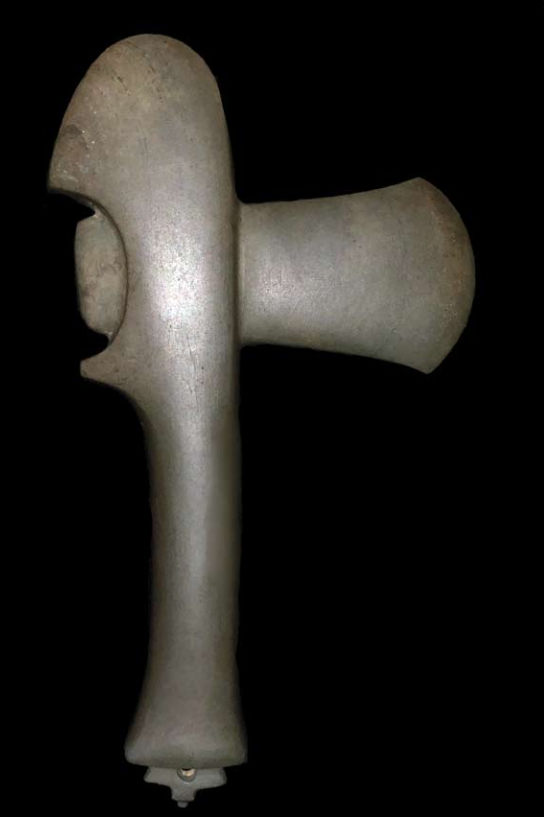|
The Weatherly Monolithic Axe
|
by Dr. Sandy B. Carter Jr. |
| Central States Archaeological Societies 2018 October Journal |
Roswell, Georgia |

|
| Raymond Weatherly with his monolithic axe, May 1, 1968.
Photograph by John Waggoner Jr |
|
This excerpt from "The Weatherly Monolithic Axe" is
page 1 of 7.
Read the complete 7 page column in the Central States Archaeological
Societies 2018 October Journal which
can be purchased on-line after March 2019
|
On the fiftieth anniversary of the Volunteer State Archaeology Society
of Tennessee, it is also appropriate to acknowledge the fiftieth anniversary
of the finding of the Weatherly monolithic axe on April 30, 1968 [Fig. 2].
Tommy C. Beutell is the current curator of the axe and has given me permission
to review its provenience and provenance. In preparation for this article,
in addition to discussions with Mr. Beutell, I have accessed the following
primary sources: (1) taped interview by Buddy Brehm with Raymond Weatherly,
1986 (tape provided to Beutell by John T. Dowd, Nashville, Tennessee, amateur
archaeologist and acquaintance of Weatherly; (2) interview June 29, 2017,
with Byron McDonald, Mount Juliet, Tennessee, (personal friend and travel
companion of Weatherly since McDonald was age 17); and interview April 21,
2018, with John C. Waggoner Jr., Carthage, Tennessee, (close friend and confidant
of Weatherly since Waggoner was age 25, who took in situ pictures of the
axe and incidentally, was the first vice-president of the Volunteer State
Archaeological Society).
Raymond L. Weatherly, was born April 15, 1927, in Lebanon, Wilson County,
Tennessee and was a charter member of the Volunteer State Archaeological
Society of Tennessee [Fig. 1]. He found his monolithic axe on what is now
called the “Jinn Bluff Site” on the Smith Fork Creek in Dowelltown,
DeKalb County, Tennessee; this site is to be distinguished from the Cottage
Home Mound (40DK19) that is also located on the Smith Fork Creek in DeKalb
County (personal communication with Tommy Beutell, Byron McDonald and John
Waggoner) [Fig. 4]. Brehm and Smotherman in 1989 (Ref.1) published a detailed
article summarizing their interview with Weatherly in 1986 (confirmed by
me in the taped interview noted previously) and discussed the details of
the finding and his curation of the axe for seventeen years. Weatherly never
said specifically where the axe was found and rather described its provenience
as “in the bend of a tributary creek of the Cumberland River… in
Middle Tennessee” (Ref. 2). Now, we know that the tributary creek is
the Smith Fork Creek in DeKalb County that flows into the Caney Fork River
that flows into the Cumberland
Read the complete 7 page column in the Central States Archaeological Societies 2018
October Journal which can be purchased on-line after March 2019

|
| Figure 2. Weatherly Monolithic Axe. Photograph by the author. |

|
| Figure 3a. Weatherly Monolithic Axe in situ, May 1, 1968;
Originally published in black and white in the Central States Archaeological Journal, page 9,Volume 16, Number 1, January 1969. Photograph by John
Waggoner Jr. |
| Read the complete 7 page column in the Central States Archaeological
Societies 2018
October Journal which can be purchased on-line after March 2019 |
|
|




